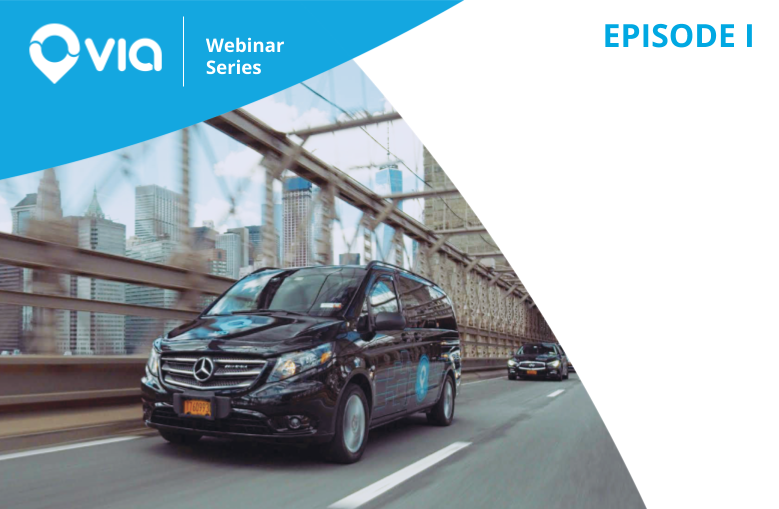- The environment: As people become more aware of the continuing impact of traffic congestion and the associated environmental impact of increasing carbon emissions, the pressure to provide sustainable, environmentally friendly transport solutions continues to build. Without doubt, the way we have been doing things is not sustainable from customer, economic, and environmental perspectives.
- Coverage: Transport agencies are adept at moving thousands of people on trains or hundreds of people on high-frequency bus networks — but these types of services don’t cover every use case. Additionally, many areas are underserved by transit, or have no service at all.
- Capital: Governments and transit agencies are under economic pressure. Taxpayers’ money must be spent wisely, and there is a continuing expectation to do more with less, especially when it comes to infrastructure. In the private sector, corporations responsible for transport options are also under pressure to use resources wisely, as well as to ensure they are maximizing their commercial returns on land use like residential developments, car parking, and increasing throughput at shopping centres.
- Convenience and reliability: Consumers today expect the ability to track their pizza delivery, their parcels, and also their transport, and at the same time, demand fast, personalised, high-quality service. They want services to take into account their particular needs, and keep them informed of the status of their service.
With four diverse types of transportation challenges to overcome, what’s the solution? One option many stakeholders are looking to is what’s known as on-demand transport.
Getting On-Demand Transport Right
To help solve common and long-standing transport in smarter and more effective ways — and most importantly, in ways that people will actually use — on-demand transport networks blend the best of public transport with ride-hailing services’ most popular features.
The nature of on-demand transport is that it is inherently flexible, complementing or integrating into existing service to fill gaps, promoting ridership on existing transport infrastructure, or replacing poorly designed existing routes. There are multiple use cases that on-demand transport can fit into, from universities to transit agencies — but to get it right, stakeholders should consider four main steps.
1 — First, identify your objectives. Ask: What mobility challenge(s) are you trying to solve, and what outcome do you want? Who is your target customer? What is important to you and the customer? Then, gather data and intelligence to assist with system design — i.e., population density, traffic flows, ways the system attracts riders, and alternate options.
2 — Next, confirm your use case. Once you’ve identified your goals and objectives, determine how you’re going to get there.
- Will riders use on-demand transport as a first mile/last mile service, to complement existing public transit networks and increase access to transit hubs?
- Is the city looking to eliminate transit deserts by providing high-quality service in areas underserved by public transit?
- Is the service for corporations/universities, to provide transport for commutes and intra-campus trips while reducing parking demand?
- Is the service for schools, to reduce costs through smarter routing while improving the experience for parents and students?
- Or is the intent to improve community transport/total mobility, to reduce operating costs and improve rider experience?
3 — Now it’s time to design the service. This comprises steps like identifying the correct size and shape of the service zone; determining the right vehicle type and volume; choosing fares and promotions that will spur usage; and defining the quality of service you want to provide/that your target customers demand, such as detour times, walking distances and wait times.
4 — Finally, simulate the service. There are many factors that go into building a successful service, which is why it’s so important to run proper simulations. Test assumptions and see how they work in the real world, revealing how many trips have been fulfilled, average wait times, average walking distances, fleet utilisation, etc... Then, use the results of the simulation to make further adjustments to the service design, and go back through the simulation tool until the right outcome is achieved.
If a service is not designed correctly — for example, if zones are too large, or too few vehicles are allocated — it will struggle or fail. This process will sometimes identify that achieving desired goals requires allocating additional resources or — conversely — adjusting goals based on constrained resources. The good news is that this can be achieved before the service is deployed, saving time and effort.
Tools for Success
While this is a high-level overview showing how on-demand transport can be successful, in truth, it’s a complicated process. Turning to an experienced technology partner who can respond to unique development requirements can help ensure you succeed — because building a service that no one uses doesn’t solve existing challenges; it only creates more.
Watch Episode II of Via's webinar series: "How to successfully launch and grow an on-demand transportation service"




